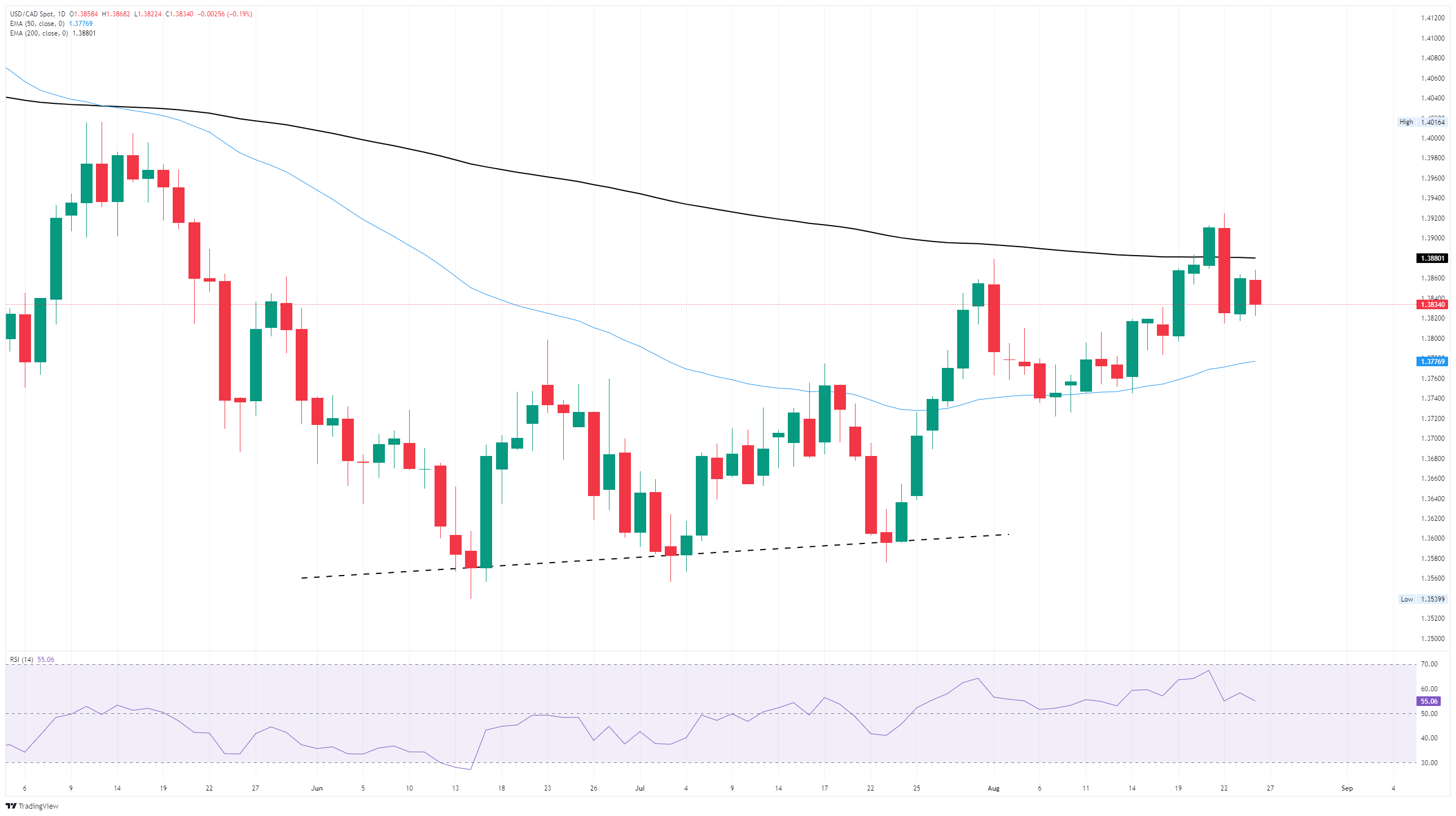- The Canadian Dollar caught a slight bid on Tuesday, easing back into recent highs.
- Despite near-term gains, the Loonie remains steeply off its perch against the US Dollar.
- Canadian GDP growth figures due later this week, to be overshadowed by US inflation data.
The Canadian Dollar (CAD) caught a slight bid on Tuesday, gaining some ground against the softening US Dollar (USD) heading into a quiet midweek. Questions about the Federal Reserve’s (Fed) independence are riding on the high side as President Donald Trump attempts to oust more Fed Board of Governors members in his quest for arbitrarily lower interest rates.
Canadian economic data remains limited this week. Canadian Gross Domestic Product (GDP) growth figures are due on Friday, but will be overshadowed by the latest US Personal Consumption Expenditures Price Index (PCE) inflation data.
Daily digest market movers: all quiet on the Northern front
- The Canadian Dollar found some headroom against the US Dollar.
- Amid a quiet backdrop of thin economic data, US President Donald Trump’s attempts to “fire” Fed Board member Dr. Lisa Cook will be heading for a legal clash.
- The US President attempting to directly undermine the Fed’s political independence will have markets on edge, and watching closely.
- US Durable Goods Orders fell less than expected in July.
- Canadian GDP growth is expected to contract on an annualized basis during Q2.
Canadian Dollar price forecast
A general lack of momentum is plaguing the USD/CAD pair. The CAD’s limited gains on Tuesday have pushed the pair back below the 1.3850 level, with a stiff technical ceiling priced in at the 200-day Exponential Moving Average (EMA) near 1.3880.
Despite a near-term resurgence in CAD strength (or Greenback weakness), the USD/CAD is still sharply up from July’s lows near 1.3600. The Loonie’s notably lack of recent strength has given the Greenback a much-needed leg up, and the pair is battling into a new higher-lows pattern on the daily candlesticks.
USD/CAD daily chart

Canadian Dollar FAQs
The key factors driving the Canadian Dollar (CAD) are the level of interest rates set by the Bank of Canada (BoC), the price of Oil, Canada’s largest export, the health of its economy, inflation and the Trade Balance, which is the difference between the value of Canada’s exports versus its imports. Other factors include market sentiment – whether investors are taking on more risky assets (risk-on) or seeking safe-havens (risk-off) – with risk-on being CAD-positive. As its largest trading partner, the health of the US economy is also a key factor influencing the Canadian Dollar.
The Bank of Canada (BoC) has a significant influence on the Canadian Dollar by setting the level of interest rates that banks can lend to one another. This influences the level of interest rates for everyone. The main goal of the BoC is to maintain inflation at 1-3% by adjusting interest rates up or down. Relatively higher interest rates tend to be positive for the CAD. The Bank of Canada can also use quantitative easing and tightening to influence credit conditions, with the former CAD-negative and the latter CAD-positive.
The price of Oil is a key factor impacting the value of the Canadian Dollar. Petroleum is Canada’s biggest export, so Oil price tends to have an immediate impact on the CAD value. Generally, if Oil price rises CAD also goes up, as aggregate demand for the currency increases. The opposite is the case if the price of Oil falls. Higher Oil prices also tend to result in a greater likelihood of a positive Trade Balance, which is also supportive of the CAD.
While inflation had always traditionally been thought of as a negative factor for a currency since it lowers the value of money, the opposite has actually been the case in modern times with the relaxation of cross-border capital controls. Higher inflation tends to lead central banks to put up interest rates which attracts more capital inflows from global investors seeking a lucrative place to keep their money. This increases demand for the local currency, which in Canada’s case is the Canadian Dollar.
Macroeconomic data releases gauge the health of the economy and can have an impact on the Canadian Dollar. Indicators such as GDP, Manufacturing and Services PMIs, employment, and consumer sentiment surveys can all influence the direction of the CAD. A strong economy is good for the Canadian Dollar. Not only does it attract more foreign investment but it may encourage the Bank of Canada to put up interest rates, leading to a stronger currency. If economic data is weak, however, the CAD is likely to fall.







